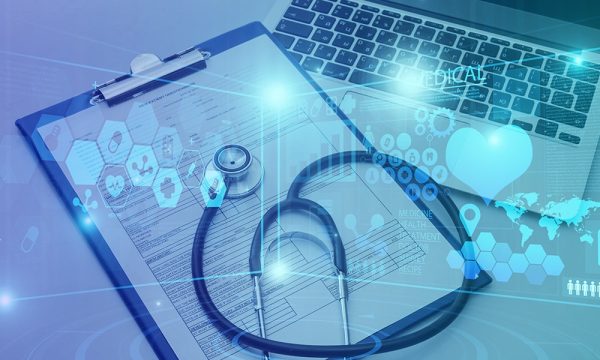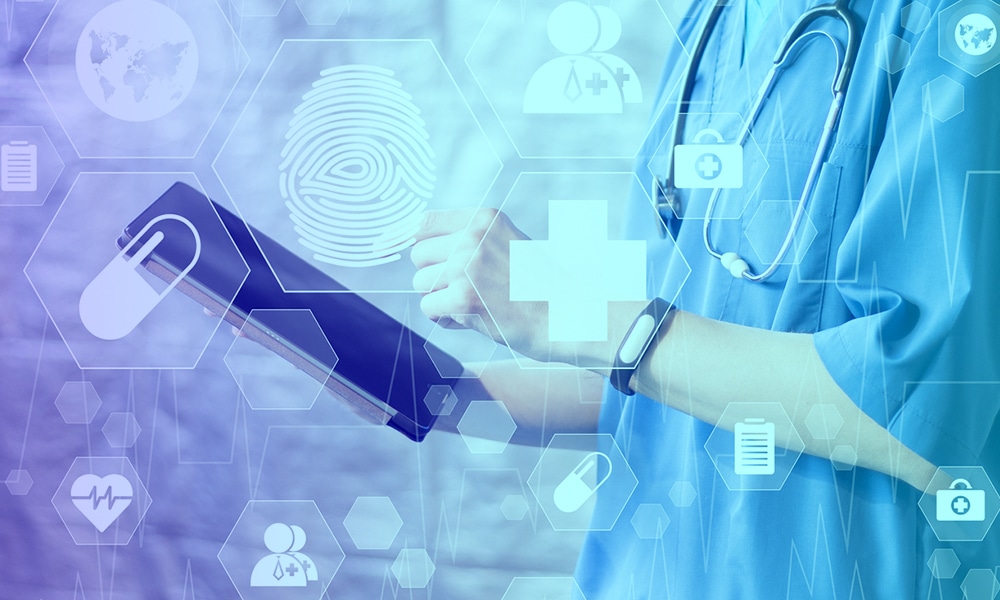In today’s world, healthcare is increasingly powered by machine learning (ML). From predicting diseases to enhancing diagnostics, ML is transforming healthcare outcomes. However, every ML project begins with one cornerstone: quality datasets.
In this blog, we’ve compiled free and open medical datasets across categories like general healthcare, medical imaging, genomics, and hospital. Whether you’re a researcher or a developer, these datasets will help you build robust and innovative healthcare models.
What are Healthcare Data Sets?
A healthcare or medical dataset is a collection of health-related information, like patient records, lab results, medical images, or treatment histories. Healthcare datasets are often organized into data collections, which are curated repositories designed for research, public health, and clinical use.
These datasets are used to study diseases, improve treatments, and develop tools like AI models for better diagnosis and care. Many healthcare datasets contain de-identified health-related data, ensuring patient privacy is protected while still enabling valuable research and analysis.
They play a key role in advancing research and improving patient outcomes.
Importance of Healthcare Datasets for Training Your Machine Learning Model

Healthcare datasets are collections of patient information, such as medical records, diagnoses, treatments, genetic data, and lifestyle details. Data science plays a crucial role in analyzing these healthcare datasets, enabling researchers to uncover insights and drive innovation in patient care. They are very important in today’s world, where AI is used more and more. Here’s why: Benchmark datasets are essential for evaluating and comparing the performance of machine learning models in healthcare.
Understanding Patient Health:
Medical Note datasets give doctors a full picture of a patient’s health. For example, data about a patient’s medical history, medicines, and lifestyle can help predict if they might get a chronic disease. This lets doctors step in early and make a treatment plan just for that patient.
Helping Medical Research:
By studying healthcare datasets, medical researchers can look at how cancer patients are treated and how they recover. They can find the treatments that work best in the real world. For example, by looking at tumor samples in biobanks, researchers often analyze gene expression and use datasets related to specific tumor types and gene profiles to understand cancer progression, as well as how specific mutations and cancer proteins react to different treatments. This data-driven approach helps find trends that lead to better patient outcomes.
Better Diagnosis and Treatment:
AI-driven tools use medical diagnosis datasets, which may include vital signs such as heart rate and blood pressure, to uncover patterns that aid doctors in diagnosing and treating illnesses more effectively. In radiology, AI can quickly identify abnormalities in scans with impressive accuracy, allowing for earlier disease detection. As these datasets continue to evolve, innovations like medical image annotation are further refining diagnostic processes, and including patient demographics in these datasets helps tailor diagnostic tools to diverse populations, leading to better healthcare results for patients.
Helping Public Health Initiatives:
Imagine a small town where healthcare experts used datasets to track a flu outbreak. They looked at patterns and found the areas that were affected. With this data, they started targeted vaccination drives and health education campaigns. This data-driven approach helped contain the flu. Datasets like these are also essential for disease control efforts and for monitoring child nutrition trends in public health. It shows how healthcare datasets can actively guide and improve public health initiatives, with tracking child nutrition being a critical component of many public health datasets.
Sources of Clinical Data
Clinical data forms the backbone of modern healthcare datasets, offering a comprehensive collection of information that drives advancements in patient care and medical research. These data are sourced from a variety of channels, including electronic health records (EHRs), medical imaging, and genomic sequencing. The World Health Organization (WHO) curates a global health data repository, providing access to clinical data from health systems worldwide. This wealth of health data enables researchers to conduct healthcare analytics, uncovering valuable insights into disease patterns, treatment effectiveness, and patient outcomes.
Specialized datasets, such as the Alzheimer’s Disease Neuroimaging Initiative (ADNI) and The Cancer Genome Atlas (TCGA), further enrich the landscape by offering detailed clinical data on disease progression, genetic markers, and therapeutic responses. These resources are instrumental in developing machine learning models that can predict clinical outcomes, personalize treatments, and ultimately improve patient outcomes while reducing healthcare costs. By leveraging such a comprehensive collection of clinical data, the healthcare industry is better equipped to address global health challenges and drive innovation in medical research.
Explore 22 Open and Free Datasets for Medical and Life Sciences Learning
Open datasets are essential for any machine learning model to work well. Many open datasets are sourced from large healthcare databases maintained by national institutes and human services organizations. Machine learning is already being used in life science, healthcare, and medicine, and it’s showing great results. It’s helping predict diseases and understand how they spread. Machine learning is also giving ideas on how we can properly take care of sick, elderly, and unwell people in a community. Without good datasets, these machine learning models wouldn’t be possible.
General and Public Health:
- data.gov: Focuses on US-oriented healthcare data that can be easily searched using multiple parameters. The datasets are designed to enhance the well-being of individuals residing in the US; however, the information could also prove beneficial for other training sets in research or additional public health domains.
- WHO: Offers datasets centered around global health priorities. The platform incorporates a user-friendly search function and provides valuable insights alongside the datasets for a comprehensive understanding of the topics at hand.
- Re3Data: Offers data spanning more than 2,000 research subjects categorized into several broad areas. While not all datasets are freely accessible, the platform clearly indicates the structure and allows for easy searching based on factors such as fees, membership requirements, and copyright restrictions.
- Human Mortality Database offers access to data on mortality rates, population figures, and various health and demographic statistics for 35 nations.
- CHDS: The Child Health and Development Studies datasets aim to investigate the intergenerational transmission of disease and health. It encompasses datasets for researching not only genomic expression but also the influence of social, environmental, and cultural factors on disease and health.
- Merck Molecular Activity Challenge: Presents datasets designed to promote the application of machine learning in drug discovery by simulating the potential interactions between various molecule combinations.
- 1000 Genomes Project: Contains sequencing data from 2,500 individuals across 26 different populations, making it one of the largest accessible genome repositories. This international collaboration can be accessed through AWS. (Note that grants are available for genome projects.)
Medical Image Datasets for Life Sciences, Healthcare and Medicine:
- Open Neuro: As a free and open platform, OpenNeuro shares a wide array of medical images, including MRI, MEG, EEG, iEEG, ECoG, ASL, and PET data. With 563 medical datasets covering 19,187 participants, it serves as an invaluable resource for researchers and healthcare professionals.
- Oasis: Originating from the Open Access Series of Imaging Studies (OASIS), this dataset strives to provide neuroimaging data to the public free of charge for the benefit of the scientific community. It encompasses 1,098 subjects across 2,168 MR sessions and 1,608 PET sessions, offering a wealth of information for researchers.
- Alzheimer’s Disease Neuroimaging Initiative: The Alzheimer’s Disease Neuroimaging Initiative (ADNI) showcases data collected by researchers worldwide who are dedicated to defining the progression of Alzheimer’s disease. The dataset includes a comprehensive collection of MRI and PET images, genetic information, cognitive tests, and CSF and blood biomarkers, facilitating a multifaceted approach to understanding this complex condition.
- MIMIC-III: A comprehensive database of ICU patient data, including imaging reports and clinical information, is available through MIMIC-III. This de-identified resource supports critical care research and predictive modeling
- CheXpert: For automated chest X-ray interpretation, a vast dataset of over 224,000 chest X-ray images with uncertainty labels is provided by CheXpert. It plays a crucial role in radiology research and disease detection.
- HAM10000: Advancing dermatology research and skin cancer prediction, HAM10000 offers 10,000 dermatoscopic images for detecting pigmented skin lesions.
Hospital Datasets:
- Provider Data Catalog: Access and download comprehensive provider datasets in areas including dialysis facilities, physician practices, home health services, hospice care, hospitals, inpatient rehabilitation, long-term care hospitals, nursing homes with rehabilitation services, physician office visit costs, and supplier directories.
- Healthcare Cost and Utilization Project (HCUP): This comprehensive, nationwide database was created to identify, track, and analyze national trends in healthcare utilization, access, charges, quality, and outcomes. Each medical dataset within HCUP contains encounter-level information on all patient stays, emergency department visits, and ambulatory surgeries in US hospitals, providing a wealth of data for researchers and policymakers.
- MIMIC Critical Care Database: Developed by MIT for the purposes of Computational Physiology, this openly available medical dataset comprises de-identified health data from over 40,000 critical care patients. The MIMIC dataset serves as a valuable resource for researchers studying critical care and developing new computational methods.
Cancer Datasets:
- CT Medical Images: Designed to facilitate alternative methods for examining trends in CT image data, this dataset features CT scans of cancer patients, focusing on factors such as contrast, modality, and patient age. Researchers can leverage this data to develop new imaging techniques and analyze patterns in cancer diagnosis and treatment.
- International Collaboration on Cancer Reporting (ICCR): The medical datasets within the ICCR have been developed and provided to promote an evidence-based approach to cancer reporting worldwide. By standardizing cancer reporting, the ICCR aims to improve the quality and comparability of cancer data across institutions and countries.
- SEER Cancer Incidence: Provided by the US government, this cancer data is segmented using basic demographic distinctions such as race, gender, and age. The SEER dataset allows researchers to investigate cancer incidence and survival rates across different population subgroups, informing public health initiatives and research priorities.
- Lung Cancer Data Set: This free dataset features information on lung cancer cases dating back to 1995. Researchers can use this data to study long-term trends in lung cancer incidence, treatment, and outcomes, as well as to develop new diagnostic and prognostic tools.
Additional Resources for Healthcare Data:
- Kaggle: A Versatile Dataset Repository – Kaggle remains an outstanding platform for a wide array of datasets, not limited to the healthcare sector. Ideal for those branching out into various subjects or in need of diverse datasets for model training, Kaggle is a go-to resource.
- Subreddit: A Community-Driven Treasure Trove – The right subreddit discussions can be a goldmine for open datasets. For niche or specific queries not addressed by public datasets, the Reddit community might hold the answer.
The Pros and Cons of Open-Access Data Platforms
Open-access data platforms provide invaluable resources for researchers, fostering innovation, collaboration, and cost-effective access to healthcare data. However, challenges such as data quality issues, privacy concerns, and technical barriers may limit their effectiveness. Balancing these pros and cons is essential for maximizing their potential in driving advancements in healthcare research.
| Pros | Cons |
|---|---|
| Accessibility: Freely available datasets make it easier for researchers and data scientists to access valuable information. | Data Quality Issues: Open-access datasets may lack standardization or contain incomplete or outdated data. |
| Collaboration: Encourages cross-industry and interdisciplinary collaboration in research and innovation. | Privacy Concerns: Even anonymized datasets may pose risks of re-identification of sensitive information. |
| Innovation: Drives the development of machine learning models and tools for healthcare analytics and research. | Limited Scope: Some datasets may not represent diverse populations or cover all necessary healthcare areas. |
| Cost-Effective: Enables cost savings by providing free resources, eliminating the need for expensive proprietary data. | Overuse of Synthetic Data: Heavy reliance on synthetic data might lead to inaccuracies or biases in models. |
| Knowledge Sharing: Promotes transparency and accelerates the dissemination of research findings. | Technical Barriers: Accessing and analyzing large datasets may require advanced technical skills and resources. |
Data Quality and Security in Medical Datasets
Maintaining high standards of data quality and security is paramount when working with medical datasets. Ensuring data quality involves rigorous validation and cleaning processes to eliminate errors and inconsistencies, which is essential for producing reliable research outcomes. On the security front, robust measures such as encryption, access controls, and secure storage are critical to protecting sensitive health information.
De-identification of datasets is a key practice, allowing researchers to use de-identified health data for analytics while preserving patient privacy. Advanced techniques like biomedical semantic indexing further enhance the usability and accuracy of medical datasets, making it easier to organize and retrieve relevant information. By prioritizing both data quality and security, healthcare institutions can foster trust, support compliance, and enable the safe and effective use of medical datasets for research and innovation.
Accelerate Your Healthcare AI Projects with Shaip’s Premium, Ready-to-Use Medical Datasets
Doctor and Patient Conversations Dataset
Our dataset has audio files of conversations between doctors and patients regarding their health and treatment plans. The files cover 31 different medical specialties.
What’s included?
- 257,977 hours of real doctor dictation audio to train healthcare speech models
- Audio from various devices like phones, digital recorders, speech mics, and smartphones
- Audio and transcripts with personal information removed to follow privacy laws
CT SCAN Image Dataset
We offers top-notch CT scan image datasets for research and medical diagnosis. We have thousands of high-quality images from real patients, processed using the latest techniques. Our datasets help doctors and researchers better understand various health issues, such as cancer, brain disorders, and heart diseases.
The data indicates that the most common CT scans are of the chest (6000) and head (4350), with a significant number of scans also performed for the abdomen, pelvis, and other body parts. The table also reveals that certain specialized scans, such as CT Covid HRCT and angio pulmonary, are primarily conducted in India, Asia, Europe and Others.
Electronic Health Records (EHR) Dataset
Electronic Health Records (EHR) are digital versions of a patient’s medical history. They include information such as diagnoses, medications, treatment plans, immunization dates, allergies, medical images (like CT scans, MRIs, and X-rays), lab tests, and more.
Our ready-to-use EHR dataset features:
- Over 5.1 million records and physician audio files spanning 31 medical specialties
- Authentic medical records ideal for training Clinical NLP and other Document AI models
- Metadata including anonymized MRN, admission and discharge dates, length of stay, gender, patient class, payer, financial class, state, discharge disposition, age, DRG, DRG description, reimbursement, AMLOS, GMLOS, risk of mortality, severity of illness, grouper, and hospital zip code
- Records covering all patient classes: Inpatient, Outpatient (Clinical, Rehab, Recurring, Surgical Day Care), and Emergency
- Documents with personally identifiable information (PII) redacted, adhering to HIPAA Safe Harbor guidelines
MRI Image Dataset
We delivers premium MRI image datasets to support medical research and diagnosis. Our extensive collection includes thousands of high-resolution images from actual patients, all processed using cutting-edge methods. By utilizing our datasets, healthcare professionals and researchers can deepen their understanding of a wide range of medical conditions, ultimately leading to enhanced patient outcomes.
MRI image dataset of various body parts, with the spine and brain having the highest counts at 5000 each. The data is distributed across India, Central Asia & Europe, and Central Asia regions.
X-Ray Image Dataset
Best quality X-Ray image datasets for research and medical diagnosis. We have thousands of high-resolution images from real patients, processed using the latest techniques. With Shaip, you can access reliable medical data to improve your research and patient outcomes.
X-ray dataset distribution across various body parts, with the chest having the highest count at 1000 in Central Asia. Lower and upper extremities have a total count of 850 each, distributed between Central Asia and Central Asia & Europe regions.
Conclusion
In summary, healthcare datasets are an invaluable resource for driving improvements in patient outcomes, reducing healthcare costs, and advancing both medical and healthcare research. By harnessing diverse sources of clinical data—including EHRs, medical imaging, and global health repositories—data scientists and researchers can build powerful machine learning models that predict disease progression and identify at-risk patients. Open-access data platforms and utilization projects provide further opportunities to analyze healthcare cost and utilization, offering valuable insights that inform policy and practice.
Ensuring the quality and security of healthcare datasets is essential for maintaining trust and achieving reliable results. As the healthcare industry continues to embrace data-driven innovation, the responsible use of medical datasets will be key to enhancing health equity, optimizing healthcare cost and utilization, and delivering better outcomes for all. By prioritizing accessibility, data quality, and security, we can unlock the full potential of healthcare datasets and shape a brighter future for healthcare analytics and medical research.







